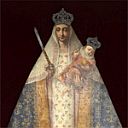0241 National Religiosity and Visual Propaganda: the Spanish Church of the Saints Ildephonsus and Thomas of Villanova in Rome
Identifiers (Article)
Identifiers (Files)
Abstract
The construction of the church of Sts Ildephonsus and Thomas of Villanova on the Via Sistina in Rome began in 1667. Headquarters of the Spanish Discalced Augustinians in Rome, the church was directly inspired by Francesco Borromini's Chapel of the Three Magi (Cappella dei Re Magi), and its artistic iconography featured a comprehensive program of Spanish political propaganda. The church was decorated as a monument to the Immaculate Conception, the favoured devotional cult of the Spanish monarchy, and its Marian content was reinforced by the paintings of the Virgins of Copacabana and Guadalupe, patrons of Peru and Mexico respectively. The entire ensemble, including the dedication of the church to the Spanish saints Ildephonsus and Thomas of Villanova, transformed the temple into a celebration of the Iberian monarchy.
Statistics


License

This work is licensed under a Creative Commons Attribution-NonCommercial-NoDerivatives 4.0 International License.



